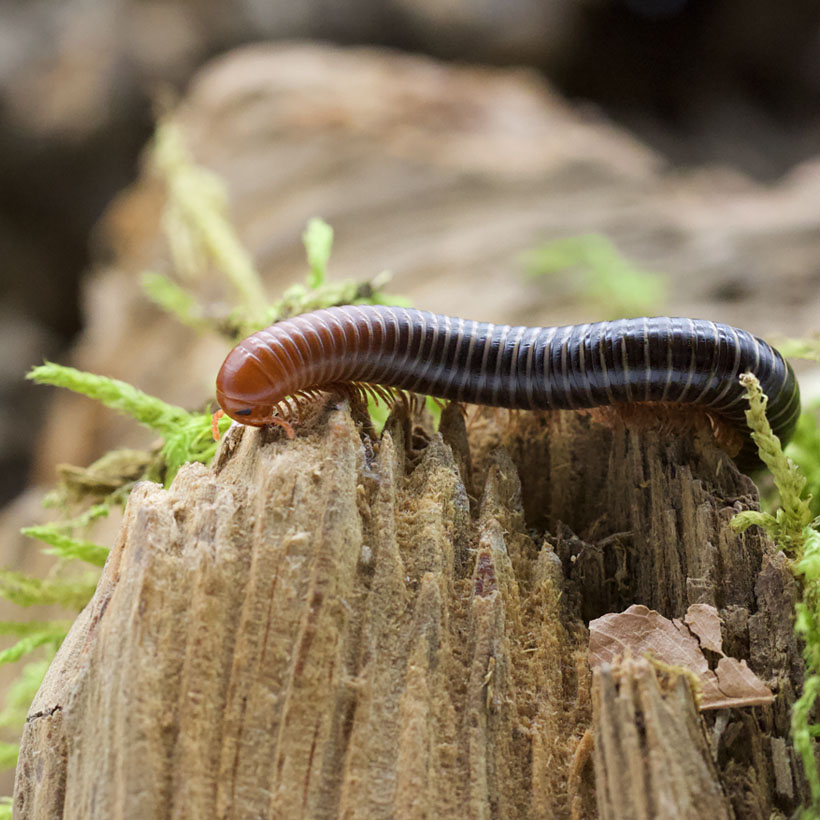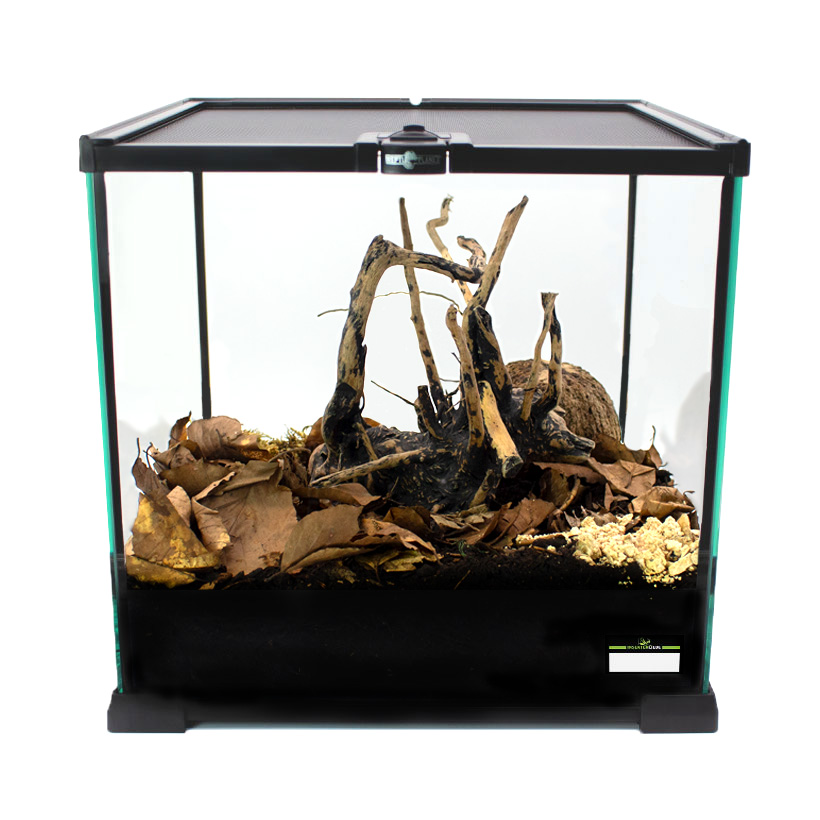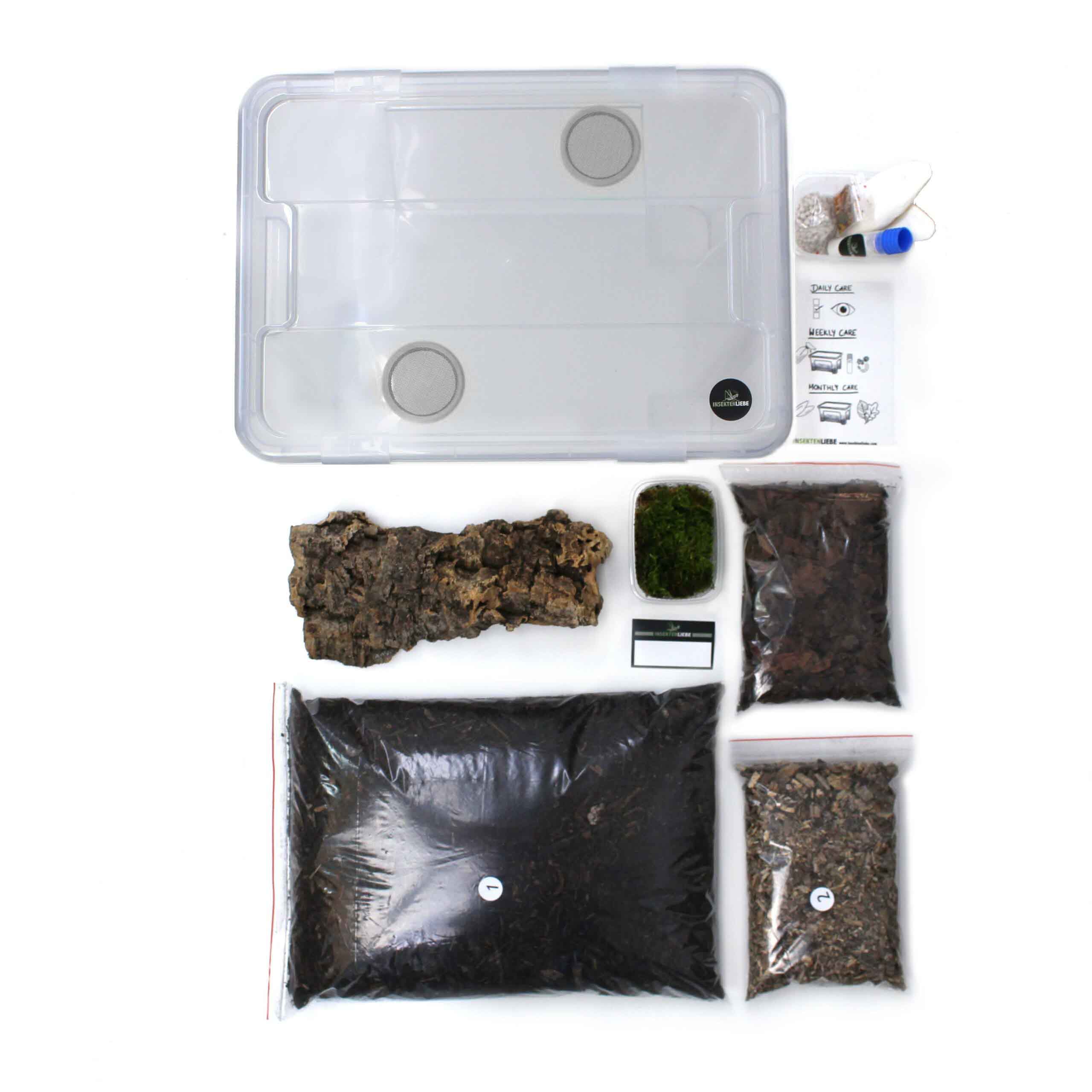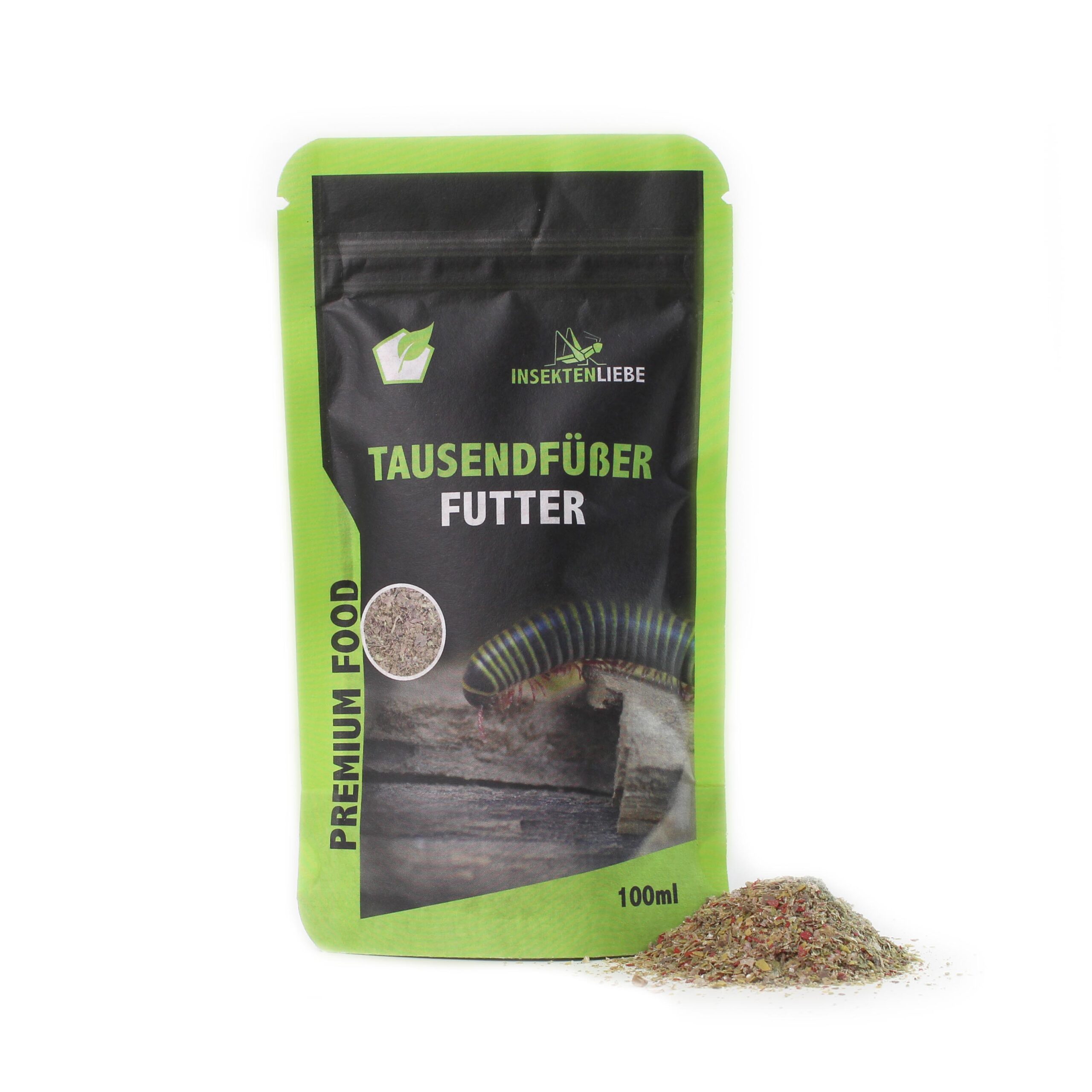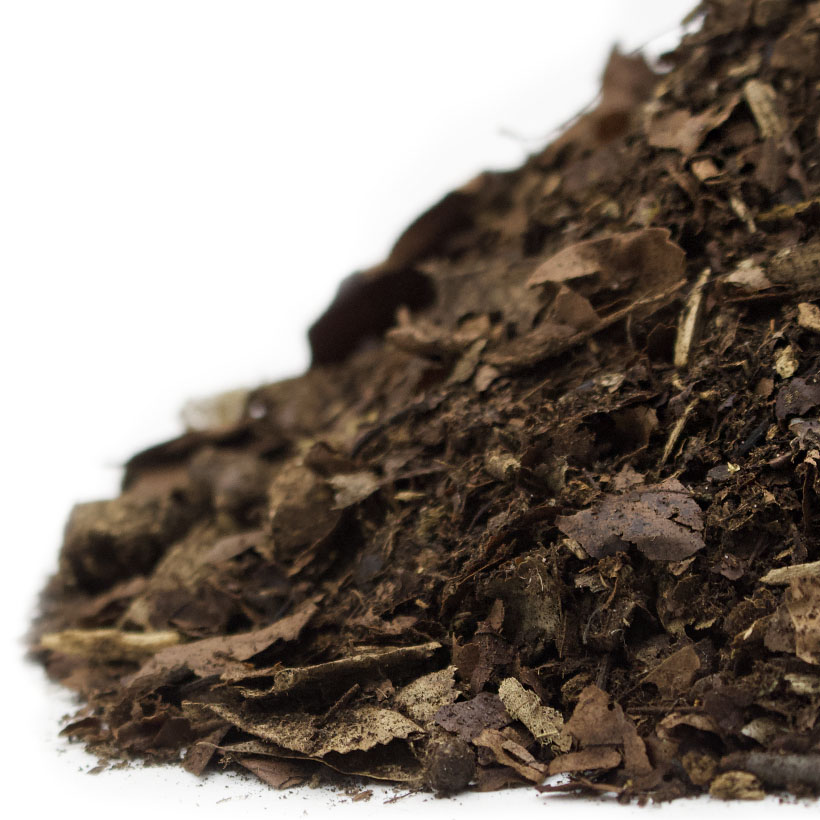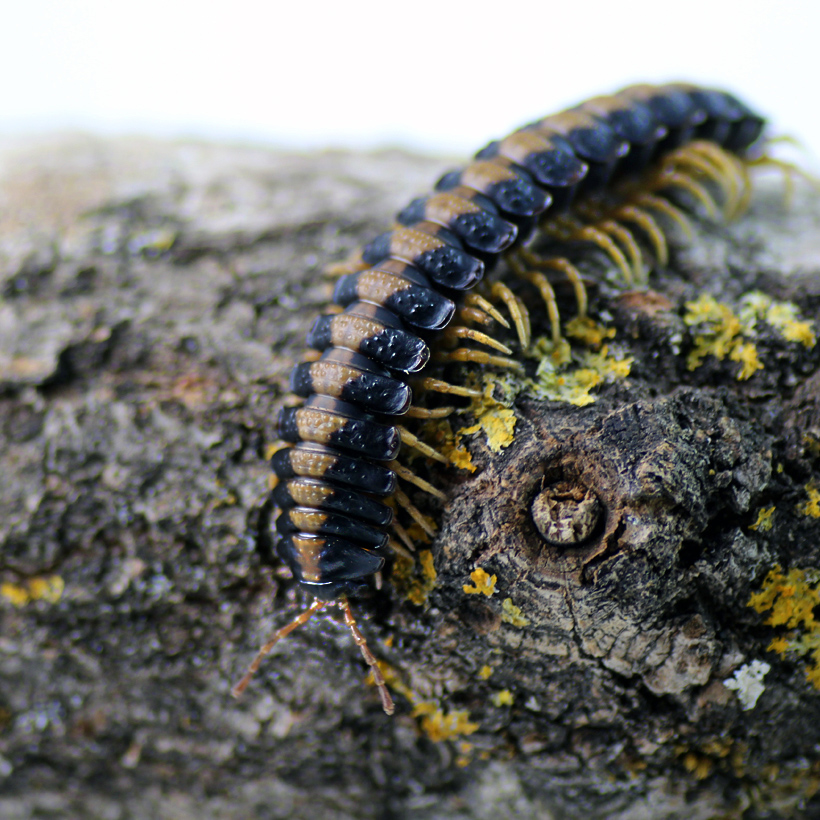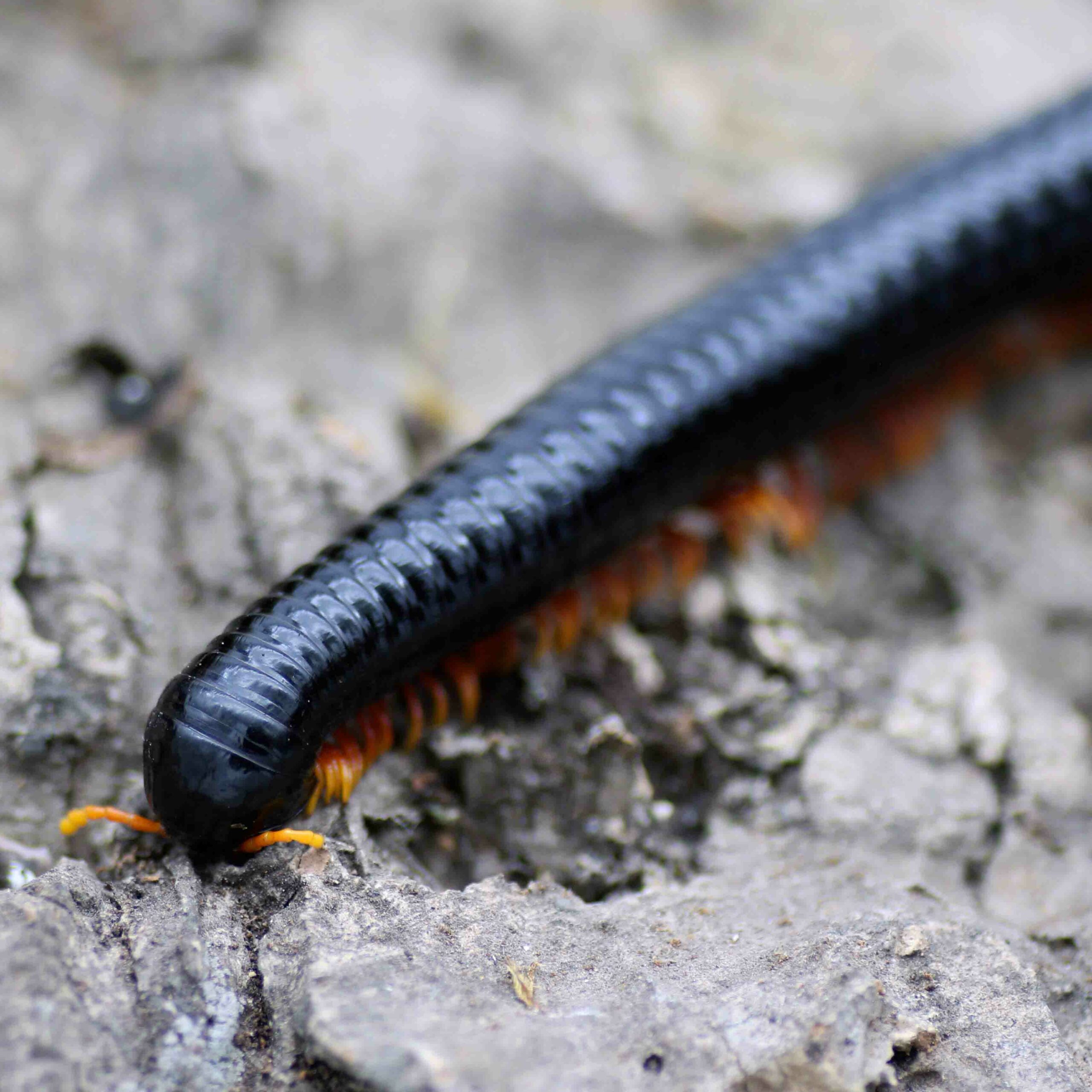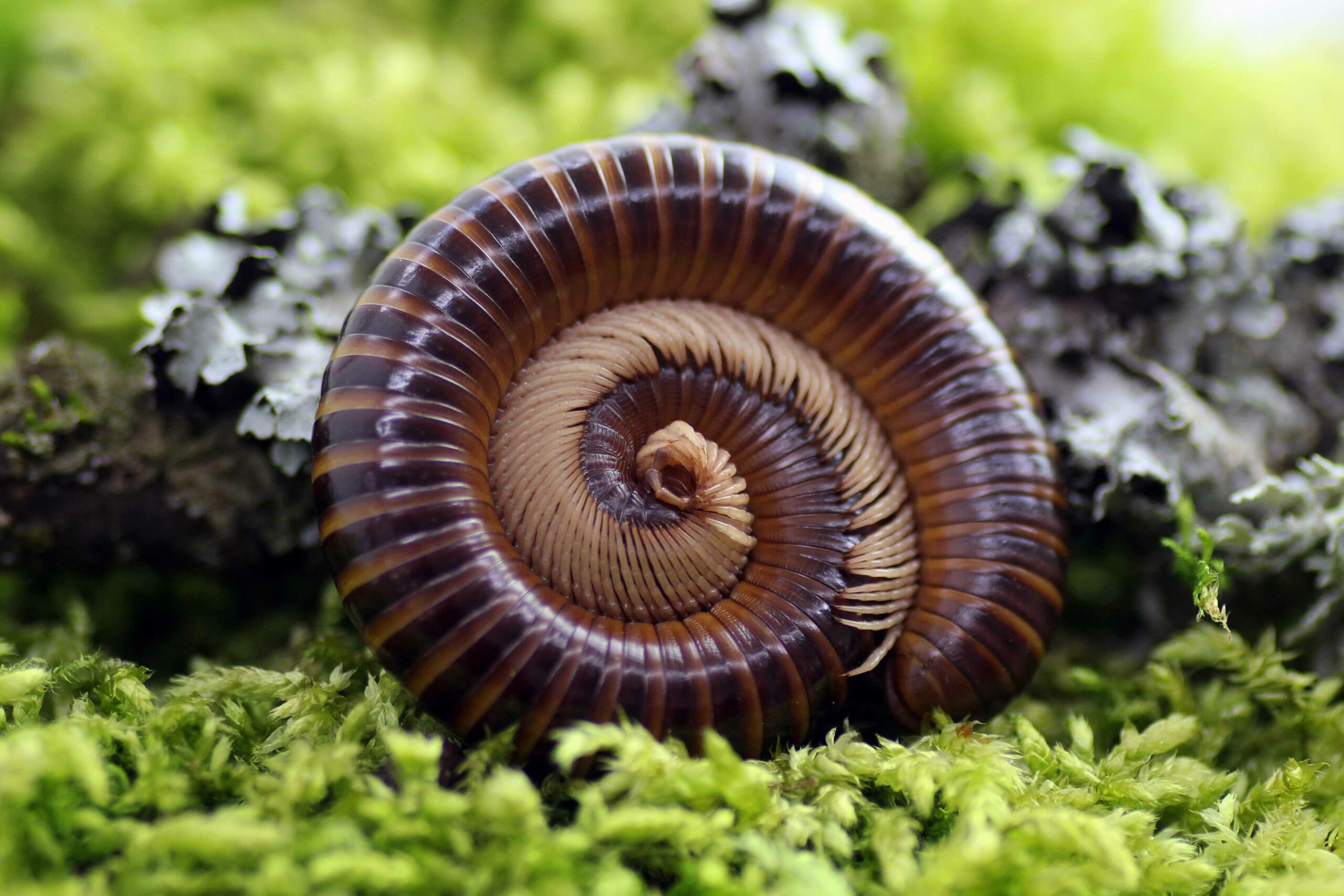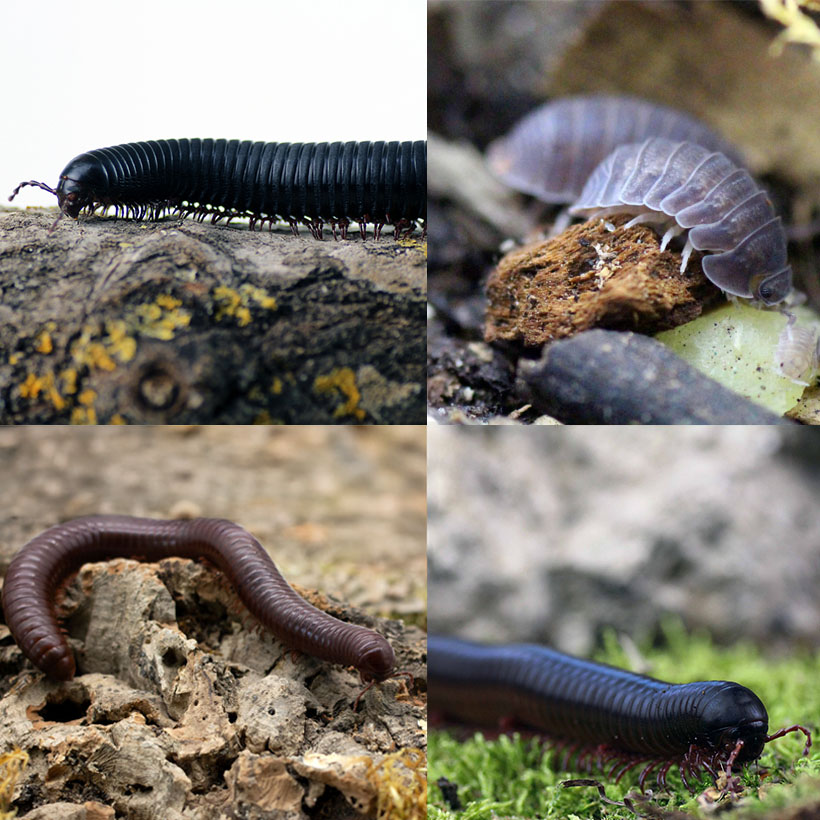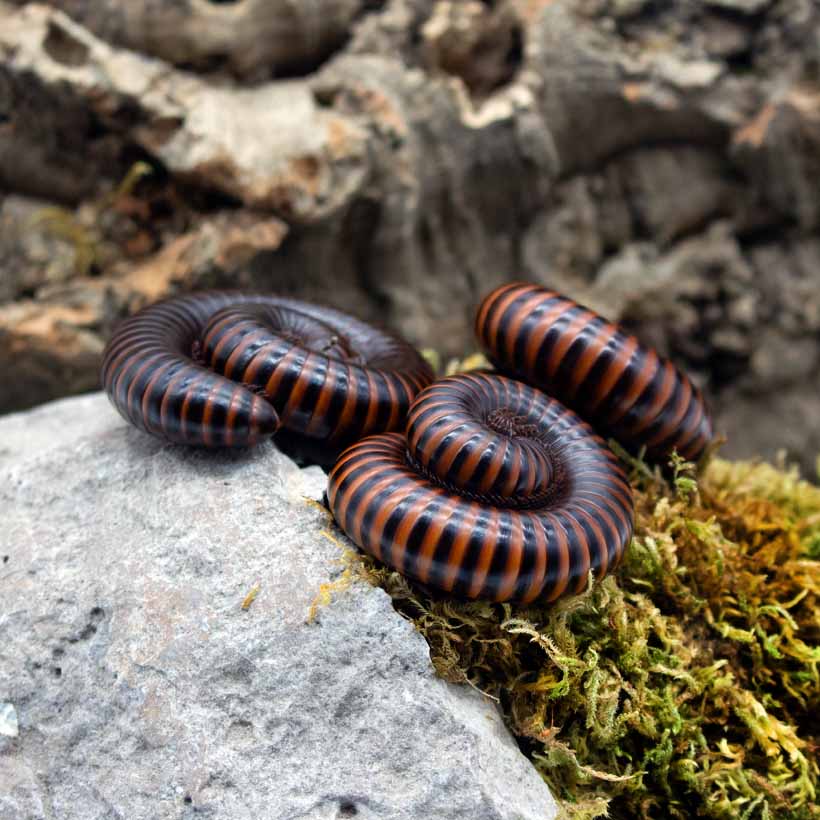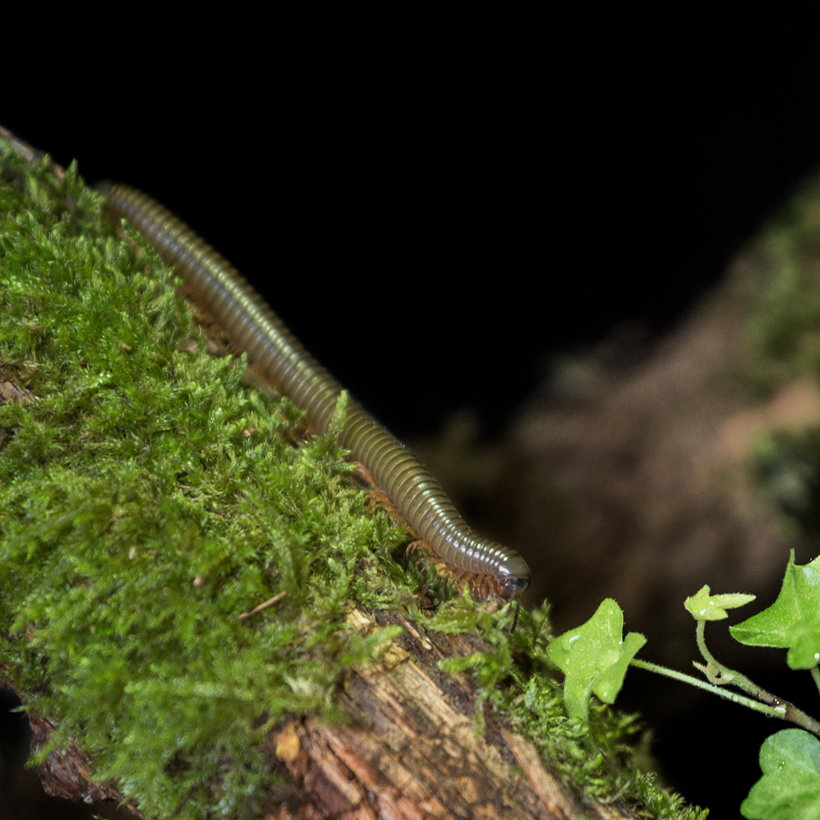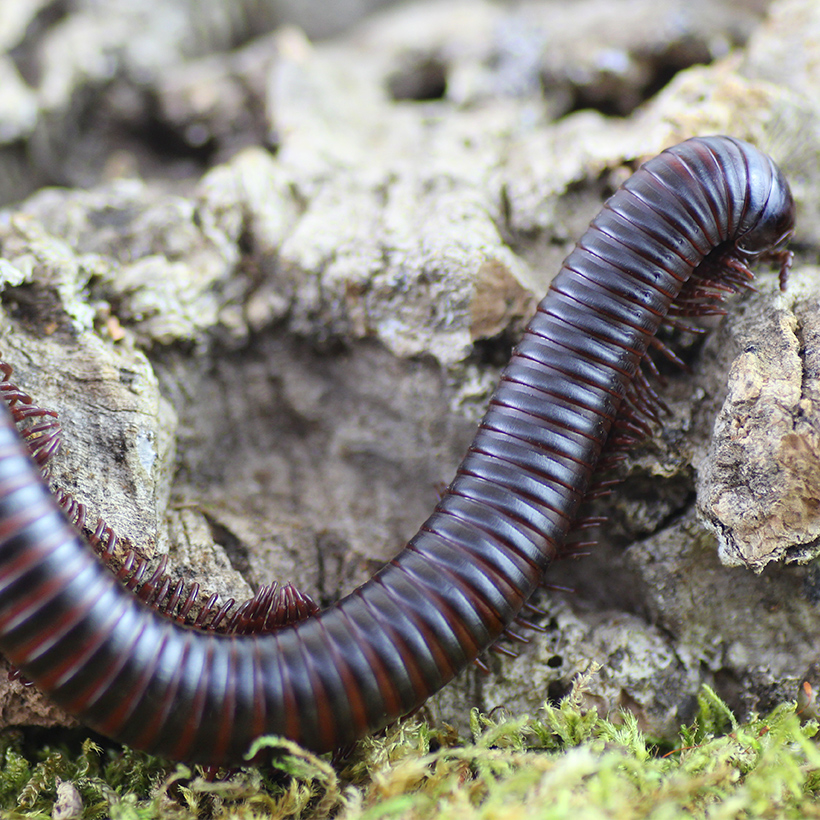Your cart is currently empty!
Analocostreptus servatius – why it is ideal for beginners
Analocostreptus servatiusformerly known as Spirostreptus servatiusis a striking species of millipede from West and Central Africa. With a length of up to 20 cm, it is one of the larger species in the hobby. The orange head is particularly striking and stands out clearly against the dark body – an impressive color contrast that immediately catches the eye in the terrarium.
This species is ideal for beginners as it is easy to care for and robust. Unlike many other millipedes A. servatius more often during the day. This makes them particularly easy to observe, which makes them attractive to owners interested in nature.
A medium-sized terrarium with at least 15 cm of diggable substrate is sufficient for keeping them. A mix of forest humus, leaves, white rotten wood and a little added lime is ideal. The substrate should be loose and slightly moist. Temperatures of 25-28 °C and a humidity of between 70 and 80 % are ideal. Bark, moss and foliage offer the animal hiding places and encourage its natural behavior.
Their diet consists mainly of organic material such as decomposed leaves and wood. You can also offer vegetables, fruit or special millipede food. Particularly practical: A. servatius helps to decompose dead material through its feeding activity – a real soil protector in the mini-ecosystem of your terrarium.
Since Analocostreptus servatius is not a burrowing or flight animal in the classic sense, it is easy to observe without becoming stressed. It is calm, peaceful and exhibits interesting behavior, especially when foraging.
If you are looking for a colorful and yet easy to keep terrarium animal, this African species is just right for you.
